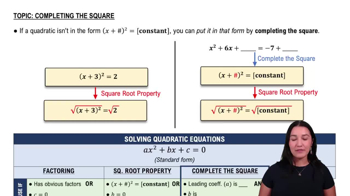Textbook Question
In Exercises 1–8, add or subtract as indicated and write the result in standard form.8i − (14 − 9i)
497
views
 Verified step by step guidance
Verified step by step guidance Verified video answer for a similar problem:
Verified video answer for a similar problem:



 3:47m
3:47mMaster How To Plot Complex Numbers with a bite sized video explanation from Patrick
Start learning